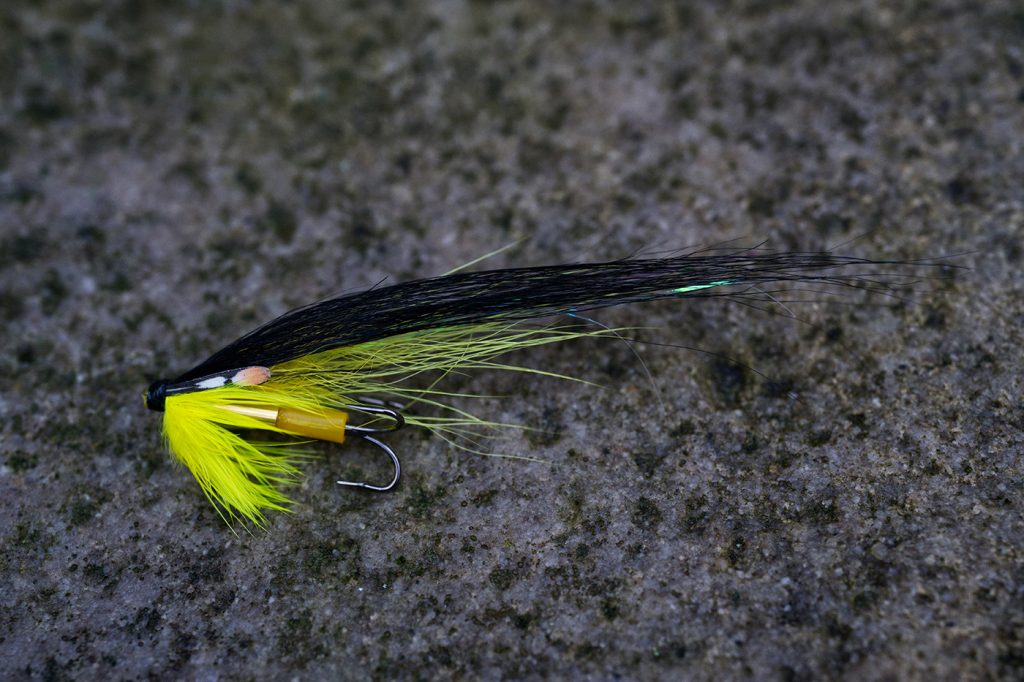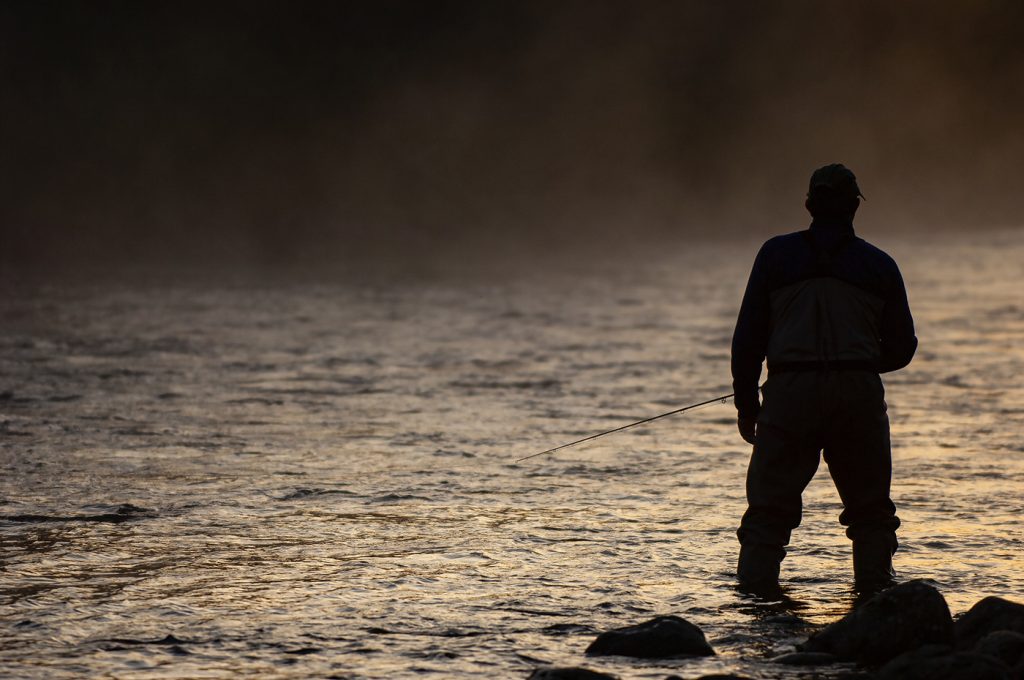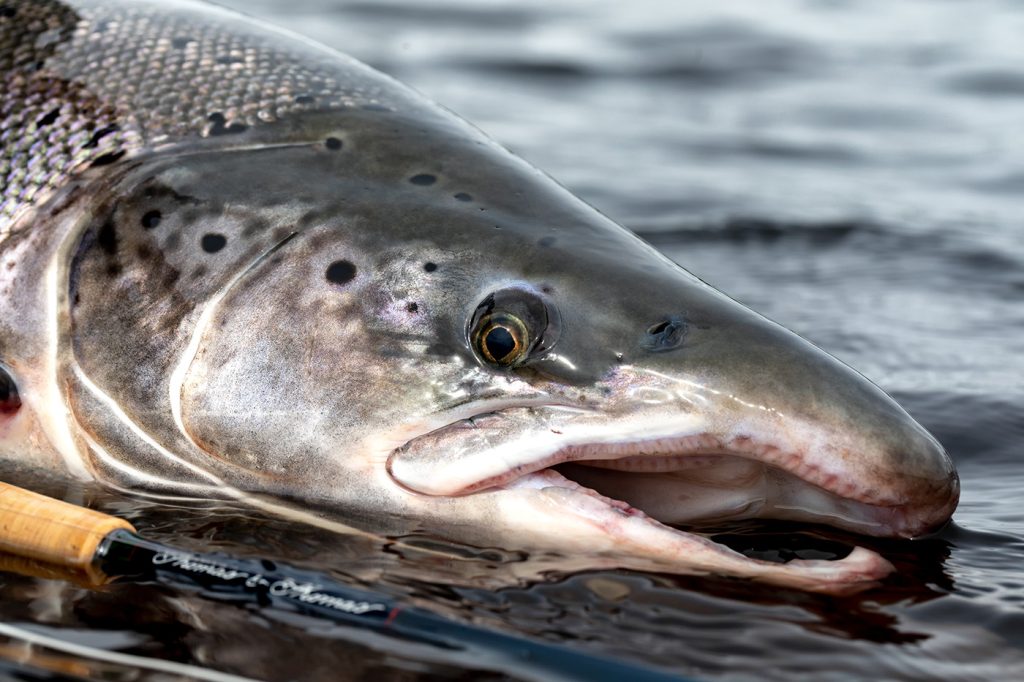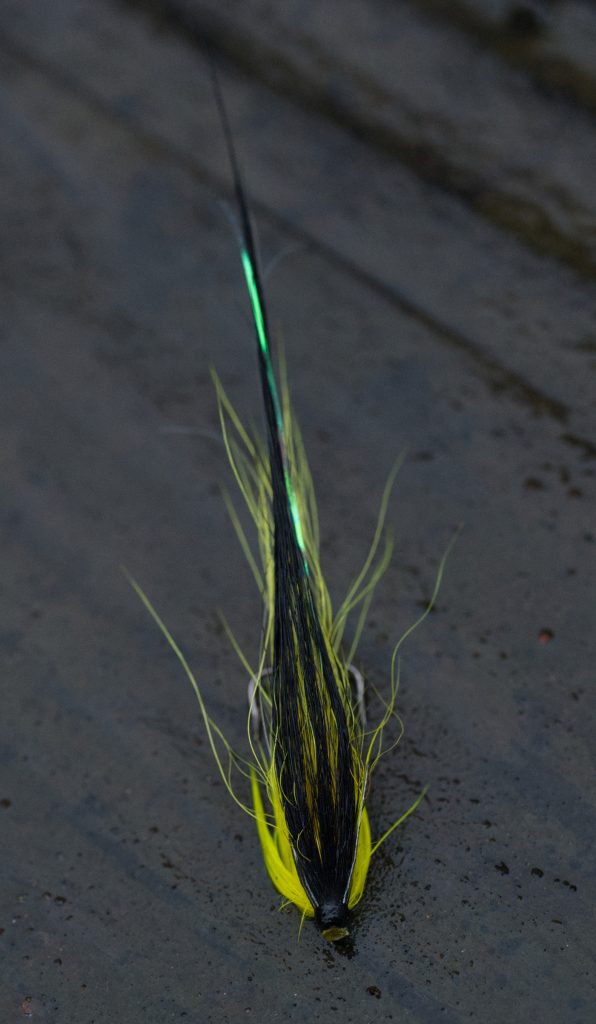
Some flies just become instant classics. Usually of course because they catch a lot of fish. Often also because they are marketed or promoted by some one well known – who catches well on them. In turn they catch even more fish, because lots of fly fishermen begin using them. It happens that it spirals completely out of control to a degree where certain, essentials materials become hard to get.

One such fly is the Dee Monkey, which suddenly became very popular on, yes, River Dee. It’s a simple fly, tied on a tube with a long, sweeping wing.
“A Sunray Shadow?”, you ask.
“No, it’s has a yellow hackle and it’s tied on a weighted tube.”
“Aaaah, so a heavy Sunray Shadow with a yellow hackle?”
“Well…”
Yes, that’s basically what it is and in no way does that take anything away from the fly, because it really is excellent. As with so many flies one can say that it’s a style more than a pattern. A tube, underwing and hackle in matching colours and a black overwing – flash to your own taste.

Photo: The Fly Fishing Nation.
The original has a yellow underwing and a yellow hackle. The reason it’s called the Dee Monkey is that it was originally tied with monkey hair. Not like the Sunday Shadow, as a bunch of hair tied in. It’s tied with the hair still on the skin, but not as a zonker. A small triangle on skin was cut out and tied down with the wide part to the back. The hair density on a monkey skin is low, so that gave the fly a very transparent overwing and a slim, yet wide profile. Legal monkey skin is becoming scarce and very hard to get. And rest assured – it makes no difference what so ever if you use that or goat.
If you look around, you can find really good quality goat. With thin, shiny, fine hairs and that is every bit as good. You can also use the guard hairs from good quality fox. The key is to keep it slim and transparent. An obvious colour combination is also blue and black (which I’ll be tying as soon as I’m done typing).

The weighted tube helps the fly fish just a little bit deeper, but first and foremost to break through the surface tension immediately, letting it fish immediately. And it does help a little in turning over the fly as well. But never let that be the reason for choosing a weighted fly.
And let me not forget… Years ago I was trying to track down the history and inventor of the fly. I ended up getting in touch with the well known Dee ghillie, Sean Stanton. When I asked him, he told me it was Jimmi Lauridsen from Denmark. Jimmi is well known from a big retailer, Korsholm, where he’s department head. And I even know the man and I didn’t know he was behind the fly. Well done, Lars! But there it is – the Dee Monkey.
